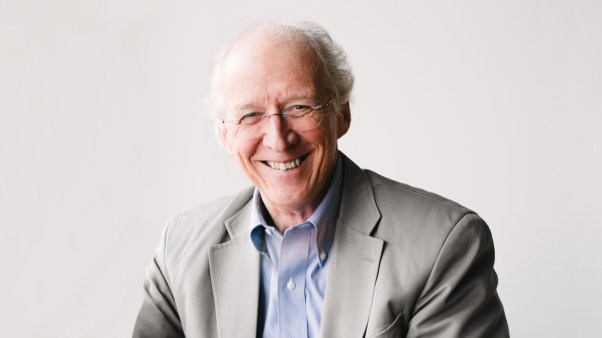Men and women can’t be friends because the sex part always gets in the way.” Harry Burns, played by Billy Crystal, famously (or infamously) spoke those words in the 1989 romantic comedy When Harry Met Sally. That line contained a multitude of messages, not all of them intentional, about gender relations, identity, and worth. Regardless of the direction the film took or the reception it got, that idea represented an all too widespread school of thought—one that isn’t flattering either to women or to the concept of friendship.
When Harry Met Sally was, of course, a mainstream secular rom-com—exactly the sort of source our churches didn’t want us to consult for ideas about romance and sexuality. So it’s ironic, Aimee Byrd suggests in her book, Why Can’t We Be Friends?: Avoidance Is Not Purity, that much of the church has wholeheartedly embraced what she calls the “Billy Crystal rule.”
“In a complete contradiction of our fight to uphold a biblical understanding of sexuality,” Byrd writes, “Hollywood became our teacher on relationships and gender after all. The church sent messages that a woman’s attractiveness serves the purpose of landing a husband, then becomes a threat to all other men. My sexuality became a barrier to friendship.”
Brothers and Sisters
Her words resonate with those of us Christians who have been warned all our lives by various Christian teachers and leaders about the dangers of cross-gender friendships. There’s no reason you need to spend any time together alone. (Or meet for lunch. Or have any unsupervised communications.) The temptations are just too great. Bad things can’t happen if you don’t let the opportunity arise.
So with the best intentions in the world, we segregate the sexes. We call it the Billy Graham Rule because of Graham’s commitment to avoiding any one-on-one time with any woman aside from his wife. (Although, to be fair, Graham had broader, fame-driven reasons for taking this step, which was only one of the “rules” he observed.) Sometimes we call it the Mike Pence Rule, based on the vice president’s similar stance. “The Graham rule is wisdom because it is honest and self-aware about how precarious the fight against sin really is,” argues Samuel James at Patheos. “. . . It’s not the rule that creates hypersexualized relationships but our own indwelling sin.” Erin Smalley at Focus on the Family concurs: “I am not saying that every interaction with the opposite sex is an affair waiting to happen or even a sexual temptation. However, having boundaries around all your interactions will help lead you to safety when it's needed.”
But as practiced on a wide scale, the Billy Graham Rule is really just the Billy Crystal Rule all over again, contends Byrd. In fact, it goes beyond Billy Crystal (and Harry screenwriter Nora Ephron), back to Freud and Darwin and all those who have taught that “affection is only a means to sex.” And it’s not worthy of the body of Christ. In fact, it undermines everything we’re supposed to represent, because it leaves no room for the sibling relationships in Christ that the Bible explicitly tells us to practice, in verses like Romans 12:10: “Love one another deeply as brothers and sisters. Outdo one another in showing honor” (CSB).
If we understand and apply God’s Word correctly, Byrd says, then we learn what it truly means to be brothers and sisters in Christ. And it’s not about fear or avoidance. “We should model sibling solidarity, in which siblings honor one another, have affection for one another, live in harmony, promote familial unity, mature together, and treasure our special sibling relationship. Ancient siblings lived by this ideal, and they were tied only by a narrow bloodline. . . . But ours is the bloodline of Christ, which carries with it victory over sin, grace that abounds, transformative sanctification, and life everlasting.”
This idea of Christian siblinghood did not arise in a vacuum. In the days of the early church, many Romans believed that Christians’ closeness to each other, with all that talk of “love feasts” and “holy kisses,” had to mean that something sketchy was going on. They were not used to seeing people act like brothers and sisters outside of actual sibling relationships, and many of them put the worst possible interpretation on it. But those Christians didn’t let the misunderstanding and slander drive them apart; they continued to show their world what Christlike love looked like. It wasn’t something to avoid for safety’s sake; it was the very thing that set them apart.
Byrd makes a very strong theological and historical case for her view. But how does all this play out on a practical level in the 21st century—when men and women work together and mingle more freely than ever, stories of falling into sexual sin are commonplace, and many Christians are on their guard to avoid even the slightest breath of suspicion? How do we learn to interact without fear?
A Better Paradigm
Byrd’s not one to offer easy answers. She wants us to dig deeper into our ideas, perceptions, and motivations, rather than just creating new hard-and-fast rules to supplant the old ones. It takes time and work to understand how to view members of the opposite sex as whole people to be valued and respected, not as temptations to be avoided. But she does help by describing Christian cross-gender friendships throughout history—Hannah More and William Wilberforce, John Calvin and Renée of France, and several more—that “blessed the world, leaving long-lasting fruit after their deaths.” The church and the world would have been poorer without these friendships
In demonstrating that Christians of opposite genders not only can but must act as siblings in Christ, Byrd has written a valuable book and done the church a great service. It remains to be seen whether we’ll continue to take our marching orders from a romantic comedy, or whether we’re willing and able to adopt the better and godlier paradigm she offers.
Gina Dalfonzo is features editor for Christianity Today. She is the author of One by One: Welcoming the Singles in Your Church (Baker).










